Robert Casier
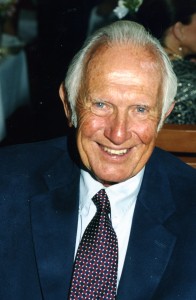
Robert Casier
Professor Emeritus of Political Science. Retired 1992
Preface
Before writing my impressions I read the papers of Hank Bagish, Sam Wake, and George Frakes, who all contributed to a better understanding of the development of the City College. All three papers gave me reference points on which to make comments. Sam Wake did a significant piece of research, including looking at the minutes of the Secondary School Board from 1946 to 1965. As the governing unit of the college, the Board made key decisions such as establishing the junior college and financing its early development.
Also involved in governing the college was the “downtown” administration of the Santa Barbara Superintendent of Schools under the leadership of Dr. Rudolph Lindquist, Dr. Einar Jacobsen, a former President of Los Angeles City College, and Dr. Norman Scharer, beginning July 1, 1956. Upon reflection I was not fully aware of the key role of Dr. Scharer in changing the direction of the college and the close working relationship with Joe Cosand from 1958 – 62.
Hank Bagish gave a “knock-down” and “drag out” account of his many frustrations with the leadership style of Director Leonard Bowman and he also presented his important role as a faculty leader. He concludes with an evaluation of college presidents. It is the most extensive paper on the role of the Faculty in the early development of the college, 1946 – 1958.
Both George Frakes and I were asked to submit (2011) our observations of the college from the earliest period up to 1970. George arrived in 1962, after the administrations of Bowman and Cosand, and has interesting observations of coming into a full working college. He was a welcome addition to the Social Sciences and became a faculty leader. Also he has an excellent section on major issues facing the college. His account includes a section on disturbances caused by the Birch Society (see Sam Wake on this subject). Frakes also gives his impressions of college presidents from Doug White through Julio Bortolazzo.
I believe the most important part of my research was to extract from a mass of information the most significant decisions made between 1946 and 1986, and who made them. Listed is a chronology of all the chief administrative leaders and their titles from 1946 to the present. Following this are my personal observations, including information about the evolution of faculty organizations dedicated to the role of self-governance. Included are comments on the performance of the college presidents with whom I worked from 1955 – 1992.
♦ ♦ ♦ ♦ ♦
PART ONE
Chronology of Significant Development at City College from 1946 to 1986.
Note: The term “board” was often used to describe the main public governing board of the college from 1946 to 1965. This board was responsible for both the elementary and secondary schools.. The college came under the jurisdiction of the secondary school district.
♦ 1946 – 47. The Board of Education of the Santa Barbara Schools District, unanimously voted to re-establish the Santa Barbara Junior College after a twenty-year hiatus (1926 – 1946).
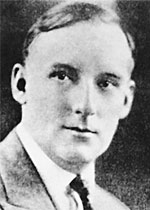
Rudolph Lindquist
Superintendent
1943 – 1948
Superintendent of Santa Barbara Schools, Lindquist created a tripartite organization called The Community Institute which was comprised of three entities: Adult Education, University Extension, and the Junior College. Initially, there were less than 100 students in the junior college program.
Clearly the most important reason for establishing the junior college was that the Secondary District needed a new tax base for operating expenses and bond assessments to build such projects as the Santa Barbara High School Gymnasium. Most of the bond money went for 12 grades, in a series of tax and bond elections during the 1946 – 1965 period.
♦ 1947. William Kircher was chosen as the junior college principal [note the high school appellation], and Assistant Director of the Community Institute. Sam Wake became Director of Adult Education and Principal of the Evening High School (note the ‘high school’ again being used).
♦ 1951. Hank Bagish and John Flynn became the first full time contract/ Faculty members of the Junior College. At that time the class schedule listed only subjects from the Adult Division.
♦ 1952. Dr. Leonard Bowman replaced Kirchner with a new title, Director, a good first step away from a high school association. Bowman did not have any title relating to the Community Institute, as did all administrators before him. (See the chart at the end of this chronological presentation). It appears that the end of the Institute came in stages. First, university extension courses were appropriately transferred to Santa Barbara College, a branch of the University system since 1945. When I came to teach at the junior college in 1955 there was no reference to the Community Institute.
♦ 1953. Katherine McCloskey, a member of the Board of Education, and a strong supporter of the college, raised the question whether the Secondary District was making only a ‘token job” in the development of the college. Dr. Jacobson responded with a formal report on the projected development for the college. First, he assumed that the college would continue to operate as part of the Secondary District (13th and 14th grades) under the city schools superintendent. Next he called for a small college of 400 – 600 students. Talk about an underestimation of the growth factor. Jacobson concluded that the Mesa campus would take care of separate needs for the next 10 – 20 years. Note the Mesa campus was a distinct site possibility as early as 1953.
Dr. Jacobson also asked the Board to have an appraisal made of both the Riviera campus of UCSB and the Mesa campus of UCSB as possible future sites for the college.
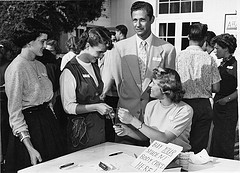
Alhecama Campus, 1952 – 1953. Purchasing student body cards: Eleanor Birth, Annette
Crago, Henry Bagish, Nancy McGee.
♦ 1954. The Board exercised its option to buy the Riviera Campus for temporary use.
♦ 1955 – 57. The Board entered into a lease/ purchase agreement to buy the Mesa campus. The actual purchase took place on July 27, 1957. Note how virtually all the decisions regarding the college were recommended by the ‘downtown’ administration of the Superintendent of Schools. I wonder about the extent to which Dr. Bowman was consulted.
♦ 1955. The Secondary District, still in need of money, passed another bond issue and tax increase. Only $1,230,000 of the $9,125,000 bond issue went to the college. Isn’t that surprising?
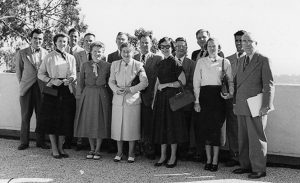
Dr. Bowman and SBCC Staff, Riviera Campus 1955
♦ 1956. The faculty of the Riviera Campus established a Liaison Committee to discuss faculty issues and to establish a better working relationship with the Bowman administration. This was probably the first step toward an increase in the power of faculty governance.
♦ July 27, 1957. As previously noted, the Board used part of the bond money to purchase the Mesa campus.
♦ January, 1958. The Instructors Association replaced the Liaison Committee as the major faculty organization, with Hank Bagish as its first president. Although one of its later main functions was to negotiate salaries and working conditions, this was not so in 1958.
♦ 1958. For the first time, Superintendent Scharer asked the SBCC faculty to choose someone to serve with community members on a screening committee for the next college President. Robert Casier was elected by the faculty. Later three other faculty members were involved in interviewing the top three candidates. What a giant step in faculty involvement in the important decision-making of the college.
Joseph Cosand was the unanimous choice of all involved. Dr. Scharer retained his position as Superintendent of Schools, as we were still part of the high school district.
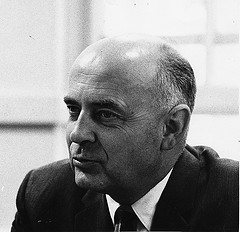
Joseph Cosand
♦ 1959. The California Master Plan called for a tri-partite organization of higher education which included the Junior Colleges, the State Universities, and the University of California. Compare this with the tri-partite organization of the Community Institute in 1946, which placed the college within secondary education. This was a mile stone for the college to be recognized as part of higher education.
Students and faculty were asked to rename the college. After first choosing Santa Barbara Coast College (1956) it later decided on Santa Barbara City College. I first supported Coast College as a better title for the large geographical area served by the college from Carpinteria to the Gaviota coast. I changed my position as I gave the issue further thought about the location of the actual college within the City of Santa Barbara. People know about Santa Barbara and it generally has a favorable connotation. I think it was a good choice.
♦ 1962. Joe Cosand left Santa Barbara to become Chancellor of a multiple campus junior college district in St. Louis. Douglas White becomes Acting President for the Fall semester of 1962.
March, 1962. Another successful bond issue with the funds split again between the Secondary District and the College. The Board of the Secondary District turned down an offer to buy what has become the West Campus. The price was only $100,000. Later in 1973, when the Board purchased the West Campus, the price was $3,800,000. What a lack of foresight! There was a lot of talk about a two-campus college.
September, 1962. Superintendent Scharer took the initiative to set up a separate college district as required by the 1958 Master Plan for Higher Education.
♦ 1963. Robert Rockwell was chosen as new President of Santa Barbara City College. March 1963. The Board formally petitioned to create a separate college district to begin July 1, 1964.
♦ 1964. Faculty Academic Senate established, with John Forsyth as its first president.
The April 1964 election was held for a separate SBCC Board of Trustees. James Garvin (Garvin Theatre) was selected as the first Board President.
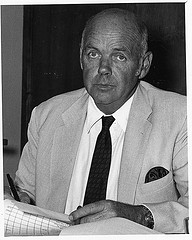
James Garvin, first president of the Board of Trustees.
♦ 1965. Robert Casier, representing the Instructors Association, makes the first faculty presentation to the new SBCC Board of a proposal on salaries and working conditions.
♦ 1968 – 69. Lorenzo Dall’armi became Acting President for 1968-69.
♦ 1969.After two losing bond campaigns in 1966 and 1967 a successful bond issue was passed in 1969 for $5,500.000.
♦ 1969 – 70. Julio Bortolazzo became the President/ Superintendent for one year.
♦ 1970. Glenn Gooder was selected as president and served until 1978. Name of college district changed from Santa Barbara Junior College to Santa Barbara Community College District.
♦1972. Sam Wake retired as Director of Continuing Education. The evening credit program was put under the direction of the college president. A divisive issue was put to rest.
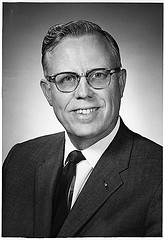
Sam Wake
♦ 1978. Actual year of purchase of the West Campus. President Gooder informed Wake that no bond money would go to purchase additional buildings for Adult Education. Wake was asked to organize a Foundation for the City College, to create a separate board for this new institution on behalf of Adult Education, and to become Executive Director. Two locations eventually housed Adult Education classes. The one at the Wake Center was originally Cathedral Oaks School, and the Schott Center was located at the old Garfield School. Later the Foundation extended the purposes for which funds could be spent .
♦ 1979. The Academic Senate established the procedure for selecting the Faculty lecturer to be awarded for teaching excellence and/ or service for the college. Robert Casier delivered the first faculty lecture.
♦ 1981. Dr. Peter MacDougall became the SBCC President/ Superintendent.
♦ 1986. The Instructors Association, in accordance with State Law (Rodda Act) was certified as the bargaining agent for the faculty on matters relating to salaries and workers conditions.
Below are listed the college leaders from 1946 – 2012, and their changing titles as the organization of the college changed.
Chronology of College Administrative Leaders
1946 to 2012
1946 Ray Soules, Director of The Community Institute
1947 – 1952 William Kircher, Principal of the College, Assistant Director of the Community Institute
1952 – 1957 Leonard Bowman, Director of the College
1958 – 1962 Joseph Cosand, President of the College
1962, Autumn Douglas White, Acting President of the College
1963, Spring – Robert Rockwell, President/ Superintendent
1968, January
1968 – 1969 Lorenzo Dall’armi, Acting President/ Superintendent
1969 – 1970 Julio Bortolazzo, President/ Superintendent
1970 – 1978 Glenn Gooder, President/ Superintendent
1978 – 1981 David Mertes, President/ Superintendent
1981 – 2002 Peter MacDougall, President/ Superintendent
2002 – 2008 John Romo, President/ Superintendent
2008 – 2011 Andreea Serban, President/ Superintendent
2011 – 2012 Jack Friedlander, Acting President / Superintendent
2012 – 2016 Lori Gaskin, President/ Superintendent
2016 – 2019 Anthony E. Beebe, President/ Superintendent
2019 – 2020 Helen Benjamin, Interim President/ Superintendent
2020 – Utpal K. Goswami, President/ Superintendent
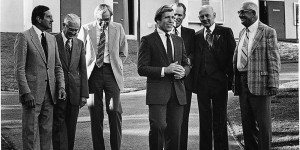
Seven Presidents: Lorenzo Dall’Armi, Robert Rockwell, David Mertes, Dr. Peter MacDougall,
Dr. Glenn Gooder, Joseph Cosand and Dr. Julio Bortolozzo
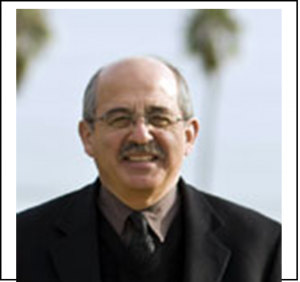
John Romo
♦ ♦ ♦ ♦ ♦
PART TWO
Personal Observations – SBCC: 1955 – 1992
In the Spring of 1955, while still in my twenties, I turned down an offer to achieve what was once a life – time goal – to be head varsity basketball coach at Santa Barbara High where I had played in my youth. My ultimate professional goal in life had changed over the years and as I worked toward advanced academic degrees my sights were set on college and/ or university teaching. So, in the spring of 1955, I turned down the basketball job and instead accepted an invitation to join the faculty of Santa Barbara Junior College to teach political science, my major field of study for all my academic degrees (BA, M.A., Ph.D.)
Many raised questions about my choice as Santa Barbara High had an excellent reputation for many years, whereas the future of the College was a real unknown. The main reason for establishing the Junior College was to bring tax monies and to float bond issues to support building projects such as the post- World War II construction of the Santa Barbara High gymnasium.
So I took a calculated chance and never regretted it. In 1955 I joined a small band of teachers on the recently vacated UCSB campus located on the Riviera. This faculty group was clearly dedicated toward making the college a reputable institution of higher learning. And it happened! Certainly nobody then envisioned that it would be cited in 2011 as the best community college in the State of California and one of the ten best in the nation.
Setting a Future Course
Evolution of Faculty Institutions 1955- 58: The Bowman Years
From the beginning of my time at the college the faculty was interested in self-governance which turned out to be a slow process achieved in gradual steps.
First, it was necessary to establish committees to deal collectively with such things as which courses were appropriate to carry out our functions which included both academic and vocational education. Therefore the curriculum committee was one of the first of the committees to emerge. Other specific faculty issues led to committees focused on teacher load, scholastic standards, and teacher evaluation. Faculty initiative and input were critical to the policies adopted later by the Director and the School Board (note reference for meaning of term ‘Board’ cited in Part I).
Was all well with the direction of the college? The answer is No, especially the unilateral decisions of the Director. In his personal observations about the college between 1951 and 1959 Hank Bagish recounts the many “run-ins” and frustrations he had with Bowman’s paternalist leadership style. Bagish held that Bowman managed in a “high-school manner”. Before coming to the college, Bowman spent many years as vice-principal of Santa Barbara High School.
As president of the student body at Santa Barbara High (graduated in 1944) I undertook writing an extensive revision of the student constitution without administrative interference. Bowman was faculty advisor to student government, and I did consult with him in a successful endeavor which received national attention. Therefore I did not have an adversarial relation with him when I came to the college in 1955. But that soon changed.
Among the list of complaints the one most cited was that regularly scheduled classes were cancelled so that students could attend assemblies in the auditorium, which is now the Riviera Theater. One of those assemblies involved the Moody Bible Institute, an obvious violation of the separation of church and state doctrine enunciated by the Supreme Court. Class interruption became more constant. I ignored requests to attend the assemblies and instead taught class. Marie Lantagne, the Dean of Students, who later became a good friend, was the “designated enforcer”. I liked Marie. I was sorry to disappoint her, but, after all, what was the major purpose of the college?
Another area of disagreement developed when an enterprising student, Eric Bruckner, organized a private dues paying club which gave discounts at local stores and from time to time would hold public dances. I was asked to be a chaperone at one of these dances and accepted (as did Hank Bagish). I was again “called on the carpet” by Marie Lantagne who thought it was improper to have the college compete with an“outside group” which put on some similar activities. Our friendship survived, and we later worked well together when I became Academic Dean of the college. Marie Lantagne, Dean of Students
In the early period on the Riviera Campus from 1955 to 1959 the most important faculty committee created was the Liaison Committee chaired by Laura Boutilier from the English Department. Robert Profant, for many years an important member of the Biology Department, also served on the Liaison Committee. The major purpose of the committee, established in 1956, was to work out a smooth working relationship between the faculty and the college administration. A noble task. The committee also had the major task of creating a Faculty Handbook which included sections “Duties of Instructors” and a “Code of Conduct”.
Some of the issues discussed by the Liaison Committee between 1956 and 1959 were not earth shattering. One, important only to instructors, was to obtain a year-end check-out sheet two weeks in advance. Another, more important, was to have the faculty meeting discuss our concerns. A good step in the direction of a more academic environment was a recommendation of the Director to have the faculty make presentations on topics of their choice. I volunteered in the Spring of 1956 to give a lecture on the Suez Canal Crisis.
Some of us on the faculty were interested in encouraging a wider student and community population for the opportunity to hear debates. The first debate was in North Hall in the Spring of 1959 (voluntary attendance). The topic of the day was ‘Are There Any Absolute Values?’. Participants were Hank Bagish (Sociology/Anthropology), Bob Casier (Political Science), Laura Boutilier (English), and Tim Fetler (Philosophy).
The Liaison Committee began holding open meetings, where any faculty member could attend. The exchange of faculty opinions was greatly enhanced by a good number of the faculty eating lunch on a lawn area below the quad. Any topic was open for discussion including those before the Liaison Committee. A great feeling of “esprit de corps” developed among the faculty which involved a commitment to common goals. Some say the true spirit for self-government started at those luncheon meetings. Hurray for us! As I said, we started out making small steps, but faculty action and the existence of a formal organization gave us the opportunity to take some giant steps after January of 1958.
As an aside, some of us got together for TGIF sessions. Those were the days of BYOB. Bagish noted from his journal that on March 27, 1957 at Bob Casier’s house “… we discussed the theory of evolution over beer!” He noted that this started “a very important tradition of discussing philosophical issues is relaxing at the end of the week”. I was happy to be a part of that tradition.
We had an accreditation study sometime in 1957. Bagish in his memoir mentions finishing the response to the committee team after a year of work – on April 24, 1958. Something big must have happened in the “downtown” administrations of Superintendent Scharer after the accreditation team visit. Apparently the faculty was not the only party upset with the college administration of Leonard Bowman.
In November of 1957, after a meeting with Dr. Scharer, Laura Boutilier learned that “heads will soon roll”. On January 3 in 1958, the Santa Barbara News Press announced that Bowman had “requested” a transfer to his new job of Research Assistant in the downtown office. After the end of the school year Dr. Bowman took a position with the Baptist Missions in the Philippines (1958). That explains the earlier Moody Bible assembly!
Dr. Scharer was interested in getting faculty input in the selection of the new college leader. In early 1958 I was chosen as the faculty representative on the selection committee which included central office administrators and community members. Our task was to read the applications and then come up with three nominees for interviews. After this procedure three members of the Liaison Committee would be part of the interviewing process. We couldn’t ask for more in the way of faculty involvement. Joseph Cosand from Diablo College (Northern California) was the unanimous choice.
During the spring of 1958, before the arrival of Cosand, Superintendent Scharer met with members of the Liaison Committee on matters of common interest to the college. Clearly a new atmosphere was developing with respect to decision-making at the College. Bravo !
♦ ♦ ♦ ♦ ♦
The Cosand Presidency, A Breath of Fresh Air, 1958 – 1962

Joseph Cosand
The Joe Cosand presidency was a breath of fresh air marked by a cooperative spirit involving faculty input. In addition, Cosand developed a close working relationship with Superintendent Scharer which proved important for the development of our gradual independence as a separate school district.
Dr. Scharer first started talking about a possible board for the college in 1958 after the ousting of Bowman. During the Cosand administration a tax override and a bond election was passed in March of 1962 totaling $10,568,400, with $3,455,000 for college constructions. Looks like the same old distribution but, after all, we were still a part of the Santa Barbara Secondary School District. Bids were sent out for the construction of Phase One of the Master Plan for the East Campus. The faculty was delighted to get some permanent buildings, including a library.
Joe Cosand was a dynamic person with many ideas for the betterment of the college. One of these was to establish a working relationship with the City of Santa Barbara for the joint use of the public tennis courts below the college, and the use of Los Baňos swimming pool on West Beach. There were many problems to be settled on the administrative level, but the agreement finally came into effect.
The college adopted a noon Wednesday Forum at the East Campus auditorium at a time when no classes were scheduled. Attendance was voluntary, and the community was invited to attend. Outside guest speakers and faculty members were invited to present lectures. After I completed my doctoral dissertation I spoke about the U.S. Senate filibuster, which is still used to thwart the wishes of the majority on major legislation and Presidential appointments. Under special arrangements with Louis Lancaster of the Channel City Club, it was my good fortune in 1960 to introduce, at City College forums, two Democratic presidential candidates: Hubert Humphrey of Minnesota and Stuart Symington of Missouri.
Later, Ronald Reagan, sponsored by General Electric, came to speak before he became governor of California and President of the United United States. Other speakers represented the arts and literature.
Having presentations such as these was part of our function to serve the community. At one point this time set aside was discontinued, I think the reason given was that we needed the time and space for class instruction. Too bad. Later on Peter Angeles (Philosophy) started a Forum series wherein he selected the faculty members who made the choice of the topic. Presentations were in the late afternoon in A-160.
Graduation exercises were marked by provocative speakers on topics of substance. On one occasion actress Dame Judith Andersen, who lived part-time in nearby Carpinteria, was given some honorary salutation, and I remember how genuinely appreciative she was. A little thing, perhaps, but important for the image of the college. Might such recognition of community leaders be resurrected?
One of Cosand’s ideas that I was skeptical about was a Basic Training Program, giving special grouping to remedial students not yet capable of doing college work. What was wrong with using the existing practice of offering remedial classes without designating these students as a special group? I’ve always thought that students should be limited in the number of times that they could sign up for a remedial subject. But I also remember the Bill Villa story. Bill Villa was a student on the Riviera Campus and then again on the Mesa Campus. After we moved to the Mesa Campus he took the introductory political science course in American Government and did very well. But he was having trouble passing what was then called Subject A, the English remedial course which he took three times. Bill was the type of student who often came by during office hours and we became good friends. After obtaining his BA he went to work in the banking field but had reservations about this field as a career choice. He wanted to know whether he should quit his job and go on to graduate school. I told him that he had the ability and that he should follow his deepest inclination. Later he served many years as the Director of Admissions for UCSB. How many times should a student be allowed to take a remedial course?
Cosand’s decision to leave the City College in the summer of 1962 was a shock for me and a good number of the community who were aware of the outstanding job he was doing at the college. Joe explained his decision was based on personal advancement. After the St. Louis experience he completed his career as a college professor at the University of Michigan. We remained friendly over the years and when he returned to SBCC he always looked me up. Shortly before his death my wife and I had a reunion with him in Tacoma, Washington, where he was in retirement. I remember telling him: “You are a good man, Joe Cosand”.
♦ ♦ ♦ ♦ ♦
Doug White, Acting President and Teacher, Fall 1962
When Cosand left for St. Louis, he was replaced for the Fall semester of 1962 by Doug White, who had been with the City Schools since the 1930’s in several capacities. In 1962, he was working with Scharer in the central office as Assistant Superintendent of Schools. Responsibilities there meant that he didn’t have that much time to devote to college. He had a nice personality, with a good sense of humor and was well-liked by faculty members. He did not make any waves. Somehow the school managed.
My first contact with Doug White was at McKinley Elementary School, adjacent to SBCC, where he was my sixth grade teacher and playground director. As playground director he encouraged my participation in sports. In the sixth grade, at long last I gained a position on the softball team which played on Saturday mornings against other elementary schools in the district. Later, when I matured, I became an athlete of standing and sports became, for a time, the most important thing in my life. Thank you, Doug White.
From the time of the third grade until high school students were under the rubric of progressive education. We didn’t get grades; instead we got letters which discussed how well we were doing. During the sixth grade Doug White allocated class time to write poetry. That I have continued to write poetry on a variety of topics during my adult life is another positive influence of a teacher who became a lasting friend.
When White became Acting President of SBCC he would sometimes take me to a service club in the community where he would introduce me. I hadn’t particularly liked these outings, but I recognized that college leaders must show a public face. White’s sense of humor came with an introduction which made reference to our time together at McKinley School : “After all these years we have only managed to cross the street!”
After my retirement in 1992 I was invited to give a lecture for the local retired teachers (CTA). There in the audience was Doug White, again cheering me on. The topic for the day was “Clinton’s First 100 Days, and Other Stuff”. During the post-lecture discussion, White got up to say, “Casier, you have come a long way.” At the time I remembered what he said at an earlier time: “We have only just managed to cross the street.”
A Personal Decision, 1962 – 1963
The 1962 – 1963 school year presented me with a second major decision about my future professional life. I took the Academic Dean position to work with Joe Cosand, and now he was gone. Although I had my differences with his successor, Robert Rockwell, that was not my major reason for return to full time teaching. More importantly during 1962 –1963
I had arranged to teach one new political science class, and found teaching more challenging than many of the administrative tasks of the Dean’s job. However, I did personally recruit Harold Dunn, a dynamic member of the Music Department. That was very positive. I realized that teaching was a better fit for my interests, talents and personality.
Fortunately by 1963 I was eligible for my first sabbatical leave which would give me the needed time to complete the requirements for a Ph.D. in political science. The major remaining task was completing a dissertation on the Senate filibuster, an effort later awarded the best work of scholarship by the Western Political Science Association. This was additional confirmation that I had made the correct professional decision.
My decision to go back to teaching was enhanced by a local teaching award which cited “courageous presentation of his subject inspiring students to a high level of thought.” This citation was given in the aftermath of the Senator Joseph McCarthy’s (R of Wisconsin) wild accusations and the emergence of the John Birch Society, both concerned with communist subversion of American institutions, including higher education. When I discussed the Birch Society in class, I asked for student reaction to the founder’s (Robert Welch) statement that President Eisenhower was a “conscious agent of the communist conspiracy”. Though hoping for a reaction of shock or laughter, bringing this quotation to class was neither courageous or subversive.
For further comment on McCarthy and the Birch Society, see the papers by Bagish, Wake, and Frakes.
Upon returning to my position as Political Science Department Chair in 1964 I was involved in the expansion of course offerings and selection of additional political science staff. I am proud of my role in helping to select outstanding people and in creating an exceptional department. These included John Kay, Peter Haslund, and David Lawyer, who introduced a course in Black Politics. The department has also benefited from the long-time appointment of Fred Hofmann as an adjunct faculty member. Manou Eskandari, another adjunct, became a fulltime faculty member of the department when I retired in 1992. Some of the accomplishments of the department are mentioned later in this paper.
♦ ♦ ♦ ♦ ♦
Robert Rockwell
Two Administrators Fight it Out, 1963 – 1968
My first contact with Robert Rockwell was when I served on the selection committee for a new president along with other members of the community. I remember that Rockwell made an impression with his knowledge about computers (this was the 1960’s). The question now became whether Rockwell could also relate to faculty and other administrators.
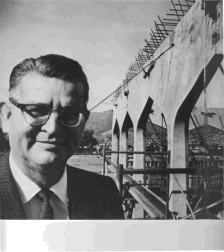
Dr. Robert Rockwell
The contest for the presidency narrowed down to two candidates, and Superintendent Scharer had reservations about Rockwell whereas the faculty endorsed him as their candidate. At the last minute Marie Lantagne received a telephone call from someone who worked in Rockwell’s school district claiming that he was a pathological liar. Marie and I asked how one could verify such a terrible accusation and how long would it take to ascertain the truth? Was there a personal grudge involved? Marie and I decided to not raise the issue.
Since Scharer had reservations about Rockwell, and as a courtesy to Sam Wake, Sam became the last person to interview Rockwell. Scharer wanted to know whether Rockwell was familiar with the Adult Education Program and whether he supported it. The interview was short, but Rockwell responded positively to the questions raised. So Sam endorsed the Rockwell selection, but later came to the conclusion that Scharer had made an “unintentional mistake.” Did the timing of the last interview indicate that Wake had an unwritten veto power on some matters? A clash did take place, initiated by Rockwell. (Also see the good section on this issue in the Frakes paper).
On two occasions, without consulting Wake or bringing up the issue in the College Council, Rockwell called upon the Board of Trustees to separate the evening college program from Adult Education. The initial college organizational structure was now being challenged by the college president for the first time.
The Board of Trustees twice rejected Rockwell’s proposal. In a last attempt to work out a better understanding, the President of the Board of Trustees called a special meeting to which Rockwell never showed up. Instead, he sent another administrator, who had not closely followed the dispute. What an insult to an important public official attempting to look out for the best interests of the college. The faculty was not fully aware of Sam’s “fight for survival”, which I think was overstated. After all, the number of students in the Adult Education program continued to grow by large numbers.
Rockwell resigned soon thereafter to take a position as President and Superintendent of the College of the Canyons, a new college in the Santa Clarita area near Los Angeles. Several colleagues from City College went with Rockwell to become administrators, including Gary Mouck and my good friend, Chuck Rheinschmidt.
An interesting personal point is that I agreed with Rockwell on the ends of his recommendation to the Board. If there was a need for coordination it should be between credit programs in the day and evening programs to see that the content, standards and hours spent teaching are the same in both day and evening classes. It is my observation the evening courses are often let out early. I only hope that chairpersons check with evening faculty as to course content and grading standards. Similar standards should also be applied to on-line courses, but I doubt that this is done.
In 1958, the Instructors’ Association replaced the Liaison Committee, the umbrella organization relating to all faculty concerns. Though we had a salary committee, it was not of great significance as the primary players were still the local district CTA in consultation with Superintendent Scharer. With the anticipated establishment of a college district in 1965 there was a re-orientation in the function of the leading faculty organizations. The Instructors Association retained its role as the faculty bargaining organization dealing with salaries and working conditions. After serving as President of the Instructors Association I was chosen to present the faculty proposals to the newly elected Board of Trustees. We were able to obtain our goal of being in the top 67th percentile among California community colleges, even though the 67th percentile was not made a permanent Board policy.
After organization efforts in the early 1960’s, the Academic Senate was officially approved in 1964. It assumed jurisdiction of all faculty concerns other than the salaries and working conditions. The first president was John Forsyth, somewhat of an anarchist who held we didn’t need many administrators, including the necessity of a college president. Imagine how well that went over with Rockwell. Bagish, the second president of the Senate, recounted resistance from Rockwell on additional faculty governance, mentioning that Rockwell was more concerned about protecting his power, not sharing it with the faculty.
Early on, in the spring of 1963, Rockwell called on me as Dean of Instruction, to help him make faculty appointments to the large member of school committees that developed over the years. I tried to follow a deliberative process in an attempt to match faculty members with their interests and talents. After this slow process Rockwell became impatient and suggested that committee assignments did not make that much difference and that we should get on with the task. Needless to say, I was not impressed, and this early incident did raise questions about working with him for any length of time.
As President of the Academic Senate Bagish was in charge of Rockwell’s farewell dinner and he recounts that he had great difficulty in saying anything nice about him. In retrospect Scharer was apparently right in his reservations about the selection of Rockwell as President.
When Rockwell left for the College of the Canyons to take over a large building program at a new campus I observed he would make a good college president as long as he didn’t have to deal with any faculty or students!
♦ ♦ ♦ ♦ ♦
Lorenzo Dall’armi, Acting President/ Superintendent 1968- 69
Campus Turmoil
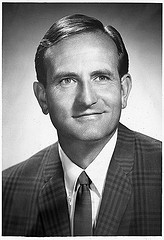
Lorenzo Dall’armi
Both Dall’armi and I were products of the Santa Barbara School Districts and UCSB, although Dall was older. In college we played volleyball on the only two courts then at East Beach and met at social affairs. He was not an unknown factor. I considered him a friend.
After a long and successful term as Principal of Washington School on the Mesa Dall came to the college as Business Manager. In that position and as acting President he concentrated on the campus improvement, and the building program associated with the successful bond issue of 1967 during which he played an important leadership role along with Sam Wake and his successor, Julio Bortolazzo.
During the disturbing period of the Vietnam War, a class incident involved a student teacher who was teaching one of the introductory political science courses. My pattern as teacher supervisor was to stay in class for a reasonable time period, and then to give the student teacher the experience of being in full control of the class. I had successfully followed this pattern in the past with other student teachers, including John Kay. I was never far away from the class, and could be called on in a moment’s notice.
By the sixties there was a small but active Black Student Union group on campus. I reached out to them when I invited their leader, Lefty Bryant, to speak on black power in one of my classes. He was well received and later signed up for one of my classes which then had a policy that if you were late you could not attend class that day. Just like Harvard! Lefty sauntered in late one morning, looked at me, and I responded that as he was late he would have to leave. He complied. The black group even invited me to join them at City Hall for some happening but I didn’t go.
Because of what I thought was an amicable relationship I was surprised that the black leadership would pick a class taught by my student teacher for a full-scale disturbance. On first exam day, about a month into the class, a black student who was enrolled began to rant and rave in such a manner that students were unable to concentrate and to take the exam. I was notified within minutes and proceeded to give instructions to the students to go to the library which had tables on which to write and what I thought would be a ‘sanctuary of quiet’. What I did not anticipate was that students taking the exam would be followed by the disturbed student. A small incident now became a larger one, clearly my mistake. The students were then escorted to the outside where they would each find a private place.
Shortly thereafter a faculty meeting was called by President Dall’armi. I was criticized by Dall’armi for not being in the class at the first interruption. The faculty meeting was highly charged and sharply divided as what to do, but somehow it was agreed to have a hearing, which involved student participants. A report and recommendation followed, calling for a return to the classroom under certain conditions. When I returned from the weekend I asked Dall whether he read the report, and he said No. I informed him that this was part of his responsibility as President. Whether he ever read the report I don’t know.
If I had been in the classroom on the day of the incident would I have acted differently? For one, I now know sending students to the library was a bad option. The last option seemed to work. But in the end I had to treat the midterm grade tentatively. If a student did well I tended to count it in determining the final grade. I was thereafter reluctant to take on another student teacher.
A short period of time later Dall asked me to write a letter of recommendation to the County Board of Education about his possible appointment as County Superintendent of Schools. I was happy to do it because, overall, I thought he was a good and competent administrator, as it proved to be during his long tenure as County Superintendent of Schools.
In subsequent years my wife and I have run into Dall a number of times, usually for breakfast, and our relationship has remained cordial.
♦ ♦ ♦ ♦ ♦
Julio Bortolazzo, Bright Comet, 1969-1970
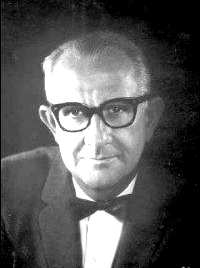
Julio Bortolazzo
Incoming president Julio Bortolazzo (a cousin of Dall’armi) helped in the passage of the 1969 Board Campaign after Robert Rockwell left for the College of the Canyons. Other key college administrators in this bond campaign were Lorenzo Dall’armi and Sam Wake.
My description of Julio was that he appeared on the college campus much like a bright comet across the night sky and then was gone. To meet Bortolazzo was not to forget him and his forceful personality. He came to the college recognized as an intelligent and successful college president, including the multi-campus college at San Mateo and other colleges as well.
When the college position opened in 1969 Bortolazzo said he didn’t want to apply for the job. He said, according to Bagish, “You come out, you ask me to be your President, and I will do so.” What does that tell you about the man? For one, he liked deference, and an attitude that ‘you really need me’.
Julio was an active and very strong president who often was supportive of faculty-initiated proposals. Sabbatical leave policy has been a concern of the faculty for years. John Kay and Hank Bagish were working on a policy which would extend a sabbatical to all those eligible who applied (the 7 year interval was to be retained). One morning at 6 am Hank received a phone call from Bortolazzo to call John Kay for a meeting at the President’s office. (6 am or 7 am phone calls from Julio were not unusual). At the meeting Bortolazzo announced he had worked out a financially feasible policy which would allow all eligible faculty members to take a sabbatical leave! Wow! Bortolazzo then sold the policy to the Board.
It’s nice to have a strong leader when he is on your side. It should be noted that before the funding solution for sabbaticals, the issue was brought up at a private social party which Julio attended and enjoyed. The only other presidents who attended faculty social parties were Joe Cosand and Peter MacDougall. It is interesting to note that those presidents are generally regarded as the three best presidents of the college.
George Frakes, who served with Ray O’Connor as co-chair of the Salary Committee of the Instructors Association, recounts in his paper that after much hard work, they received the support of the college President to continue ”to compensate the teachers and staff at the top 1/3 of the community college in the state…” Another triumph of faculty and administration cooperation.
Julio knew how to play the political game. In the late 1950’s and early 1960’s, before Bortolazzo, the faculty asked the Board to differentiate the hourly rate between credit and non-credit courses. The idea was summarily denied by Superintendent Scharer. Then came the proposal, advanced by Rockwell, to separate the evening credit proposal from the Adult Ed (then called Continuing Education) Division. As previously reported the Board was adamant about not changing that, so it was interesting to read in Sam’s paper, that in 1969-70 school year Russ Wenzlau was appointed to the Adult Education Division of the Evening College.” It is not surprising that the policy was not changed until after Sam Wake retired in 1972.
The 60’s were an exciting time politically with the foundation of the Civil Rights Movement (The Civil Rights Bill, 1964, The Voting Rights Bill of 1965, etc.). The conflict over Vietnam became enlarged under Lyndon Johnson. Turmoil on the campuses broke out, including UCSB and SBCC.
President Bortolazzo was active with students. He arranged a student gathering in the cafeteria at the beginning of the school year, where he asked me to speak. One of my favorite themes, in which I truly believe, is that college life should be balanced between academic and societal concerns. I hope the speech wasn’t too heavy. Good in some ways, Julio liked it. Debates on Vietnam took place in the free Speech Area, and I participated in two of them. Upon invitation President Bortolazzo on at least one occasion took the open mike at the Free Speech area to lambaste U.S. participation in the Viet Nam War.
Julio also did something rarely done by college presidents. One day he dropped into my foreign government class where our discussion was on the emergence of the new strong presidency of de Gaulle under the French republic. I soon engaged him in the class discussion and he really enjoyed it. It was a bit devilish, as the comparison to de Gaulle was rather obvious. But the main thing is that, unsolicited, he was there. The only other president to visit my classroom in a similar non-official capacity was Joe Cosand. Cheers to both of them!
The de Gaulle analogy remained clearly in my mind. We at City College could see what a cooperative, strong presidential leadership could do to benefit the college. But some of us had reservations about Julio’s style of leadership. In the spring of 1970, there were rumors that Julio was going to resign, and a petition was being circulated among the faculty to sign as a means of persuading him to stay. I was one who refused to sign the petition. I don’t know what Hank Bagish did, but from what he said in his paper I doubt that he signed. Bagish remarked: “I sometimes wonder if he retired because he wasn’t getting as much of his way… as he would have liked.” During this period Julio and I met and he mentioned that certain names were missing from the petition. Shades of the Napoleonic tradition – the idea that (SBCC) would falter should he not continue as (our) leader. Not to my liking.
Shortly before Julio left to go to South Carolina to become Chancellor of several technical colleges he dropped by my office for a chat. He asked what I thought about him teaching some courses in history. I observed that Frakes was then History Department Chairperson, and Chairperson of the Social Science Division. But I did indicate that it might not be a bad idea to take a few refresher courses in history. When I later talked to Frakes he indicated he followed a similar recommendation. Nothing further developed on this subject.
When Julio came back to Santa Barbara to retire after his one year in South Carolina I saw him on a number of occasions and our friendship continued. I actually liked Julio personally. On occasion we would play doubles tennis together. During the 1980’s he asked me to speak about Latin America to a Women’s study group that was meeting at his house. Fortunately, I did have a background in this area of study. For many years I taught an upper division course at UCSB on Latin America in World Affairs.
More recently, during one phase of my third and last sabbatical before retiring, I spent time in Argentina & Brazil meeting with the U.S. diplomatic personnel there. When in Brazilia the diplomat in charge of the embassy and I went to observe a session of the Brazilian Congress. At the same time we escorted the “Red Phone”, which was taken with us in the event of necessary conversation with Vice-President Bush who was coming to Brazil to view the transition away from military government.
My presentation on Latin America illustrates the benefits of cooperative leadership at SBCC, which was of benefit to the local community. The lecture was in part made possible by an enlightened Sabbatical Leave policy. After my presentation Julio said, “I owe you one”. But really I owed him one as well.
♦ ♦ ♦ ♦ ♦
Glenn Gooder, 1970 – 1978
Steady Marks the Course
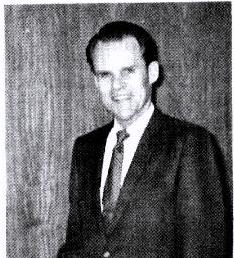
Glenn Gooder
Compared to the fast pace and short tenure of the Bortolazzo administration, the Gooder presidency was marked by less drama, and stable progress over a longer period of time. This was in part due to a contrast in the personalities of the leaders. One sought the limelight and the other met his duties with quiet determination. But things got done. An important decision referred to earlier (see chronology) was the transfer of the evening credit program Adult Education to the college administrator on the Mesa. A troublesome issue was finally put to rest, Gooder had the political smarts not to go to the Board of Trustees until after the retirement of Sam Wake in 1972.My personal dealings with Gooder on faculty matters were not extensive. I was again a member of the Academic Senate and resisted his request to create another set of administrators at a level beyond the division chairperson. Why did we need another layer of bureaucrats who no longer did any teaching? The inevitable did happen as “strangers” filled these administrative positions. I began to think that the college was no longer at its optimum size.
During the Gooder administration, one of the faculty members who did not get an appointment within the new administrative structure filed a lawsuit claiming racial discrimination. The administration won the case but the conflict was long and nasty. Gooder worked successfully with Sam Wake and others to gain passage of the 1973 bond issue which enabled building on the West Campus. This included the Garvin Theatre, named after the first president of the College Board. Shortly thereafter Gooder informed Wake that district board money would not be available for Adult Education.
President Gooder suggested that Adult Education establish a Foundation for the City College. Sam was told to recruit a board of directors and to become the first Director of the Foundation. The original purpose of the Foundation was to secure private funds to support Adult Education projects. In time Foundation funds were used to support other aspects of the college. This was a beneficial and far-reaching decision.
♦ ♦ ♦ ♦ ♦
David Mertes: 1978 – 1981
A Man on the Move
David Mertes was an experienced college administrator who knew the score and helped the college do some good things. As a faculty member I found him distant but that was probably because he spent so much time away from the college with his involvement in the community college affairs at the state level.
Later he spent a short period as president of another college district, and then became Chancellor of all Community Colleges in the State. Overall, he was obviously a man of substance and talent. During the Mertes Administration, John Kay, president of the Academic Senate, proposed the idea of an annual faculty lecture. The Academic Senate then established a committee to set up a selection process involving nominations by students and faculty, with the final decision made by the faculty committees. Mertes endorsed the idea of an annual faculty lecture given for outstanding teaching and/ or service to the school, which is regarded the highest faculty honor. It was my good fortune to serve as the First Faculty Lecturer in1979, and gave an address on Changing Patterns in American Politics.
I am pleased that all full-time political science professors were subsequently chosen for the Faculty Lecture honor. In addition, two city college students who took a political science class from me were selected, John Eggler and Kathy O’Connor.
Congratulations! In support of the Continuing Education Division Mertes worked with Sam Wake, Eli Luria, and others worked towards securing Garfield School near the Cottage Hospital for a second adult campus. It later was named the Alice Schott Center in honor of the woman who initially gave the property to house adult education and The Community Institute. The other campus, the former Cathedral Oaks School, was earlier purchased from the Goleta School District under the Gooder administration. This campus was later named the Wake Center in honor of Sam. A well-deserved tribute!
♦ ♦ ♦ ♦ ♦
Peter MacDougall. 1981 – 2002
Outstanding Long-term President
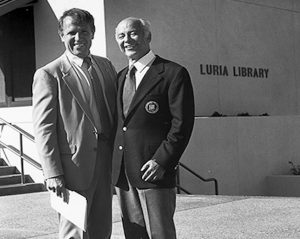
Peter MacDougall and Eli Luria in front of Luria Library.
When the Board announced their selection of Peter MacDougall, one member of the Board asked the audience: “What do you think of our selection?” I remember thinking that the only MacDougall that I was familiar with once played for the New York Yankees. Bad joke, especially since Peter MacDougall is a big Boston Red Sox fan.
Who would have thought a president would stay twenty-one years on the job, and after it all, be generally regarded as the best president in the history of the college? That was my opinion as well. What factors contributed to that consensus of his merits? These included a terrific, out-going personality, smarts (intelligence), as well as a willingness to listen to opposing positions, and even maintain friendly relations with faculty when there were areas of disagreement. This same spirit took place in an annual meeting he had with members of each academic division.
There were only two areas of disagreement that I had with MacDougall on major issues. Both related to salaries because there were years of meager salary increases due largely to funding cutbacks created by Proposition 13, which denied local districts the right to raise taxes in the traditional manner. We moved away from the 67th percentile as a guide to salary payments. It was hard to accept this reality as we were often cited as one of the best community colleges in California.
With the passage of a state law (Rodda Act), the right to collective bargaining was given to school teachers. The question was whether the Instructors Association should become the bargaining unit, or to continue with the more informal relationship used since 1965. After a session in MacDougall’s office with other faculty, it was easy “to read” Peter’s opposition to collective bargaining. He offered instead a proposal to increase the release time for the Instructors Association’s president and a proposal for higher salaries through established “chairs” for some professors. I thought, if offered, a chair professorship would be great, but that this was a “pie in the sky”. My support for collective bargaining was based on the belief that there should always be a check on management.
Later (1986) the Instructors Association officially became the sole bargaining unit on matters of salaries and working conditions. See Jack Ullom’s paper for a description of the details on the subject. In the early 1990’s I was chosen chief negotiator for the Instructors Association, joined by such stalwarts as John Kay and Bill Miller. It was from time to time not a pleasant experience. One of our concerns was that, after being told there was simply no money available it suddenly appeared as from nowhere. The faculty group stayed the course and after a presentation to the Board an agreement was reached; we moved in the direction of the 67th percentile.
I was especially impressed by MacDougall when he had to deal with negative public opinion over a faculty member who ran into difficulties over a drinking problem. The man was not fired but instead given a chance to rehabilitate himself and later died with a sense of dignity. The compassion and courage of MacDougall in this case was exceptional. Cheers!
By the end of his tenth year in 1992, the year that I retired, MacDougall had won the plaudits not only of the local community, but also recognition as one of the best presidents of a community college in the nation. He worked successfully with all facets of the college, including Continuing (Adult) Education. The west campus was expanded by attractive buildings, including a new location for the library, named in honor of Eli Luria. When President Bill Clinton campaigned for re-election with a speech on the West Campus he wondered how students could find time to study in such an attractive setting. The national award citation for SBCC in 2011 is in part a reflection of President MacDougall’s twenty-one years of outstanding leadership to Santa Barbara City College. After his retirement, I asked MacDougall to join a small breakfast discussion group where he is appreciated for his sharp mind, and all-around good nature.
♦ ♦ ♦ ♦ ♦
IN RETROSPECT
General Remarks College presidents should receive due accolades for what they have done for the betterment of SBCC, but any reference to the recent (2011) national attention to SBCC as one of the top community colleges in the U.S. must include the origins of excellence made during the formative period in the 1950’s. It was then that dedicated and talented faculty introduced high grading standards which resulted in the transfer success at the four-year colleges and universities. As one interested in government it is noteworthy at an early date that faculty was committed to the democratic idea that the faculty should play an important role in the governance of the college.
During the 50’s and after, the Social Science Division sought to maintain an intellectual – scholarly atmosphere both inside and outside the classroom. This approach involved active participation in campus activities and in the community at large.
The SBCC Social Sciences Division played a strong and integral role among college organizations for the many years of my tenure. Important Division functions included discussion and approval of new course offerings before they were sent to the Curriculum Committee. Issues of proposed college policy were brought before the Division for discussion and recommendation, reflecting a larger viewpoint than the parochial interests of small departments. Intermediary institutions are as necessary in education as they are in the larger society.
The Social Science Division and the Department heads played an administrative oversight role with their involvement in teacher evaluation, maintenance of high grading standards, and checking to see an instructor does not exceed school policy on extra TLUs. Are these functions still exercised at the Division level? It has recently come to my attention that the Division structure of the college has been eliminated, but that the Social Sciences have created an unofficial entity to deal with certain common concerns. The elimination of Divisions may result in disputes resolved at a higher administrative level. Unintended consequences may lead to a measure of anarchy, a loss of collegiality and self- governance which was established back in the 1950s.
Political Science Department
The faculty of the political science department has been outstanding in a variety of ways. Has any other community college offered such an extensive program of overseas education? Peter Haslund inaugurated and developed the China program. John Kay has joined him there and in Vietnam, and many times has been part of a team in England (Cambridge and London). More recently, as part of our Middle East program, Manou Eskandari has taken students to Turkey. How many community colleges have a Middle East academic program? Domestically, Haslund has had on-the-scene programs in Sacramento and Washington, D.C. My wife (Shirle) took a class from Haslund in D.C. and considers it one of the very best of her educational experiences. Eskandari has also taken a group to the nation’s capital. All political science teachers made contributions to the local community in a variety of ways. In the first ten years I was the lone ranger as the sole member of the department. I still remember my first appearance as a guest speaker before the Daughters of the American Revolution (DAR) where the topic was Communism – think about that !
After 47 full-time years and 5 years in post-retirement I made over 100 appearances as a speaker, moderator, or panel member on topics of domestic and international politics at a variety of venues. Others have followed suit with similar and different contributions. Peter Haslund did a local TV program for a time, and recently (2012), I saw Manou Eskandari speaking on local TV about the Arab Spring and Middle Eastern politics. Fred Hofmann continues to write incisive articles to the Santa Barbara News-Press about local and national politics. For many years John Kay served as a moderator for numerous programs in the community and also served as Chairperson of the SB City council Task Force on Electoral Reform during the Sheila Lodge administration.
Casier and Kay both have served on the Board of Directors of the local United Nations Association (John Kay is president), and also were active in local Democratic organizations. Peter Haslund was a director on Nuclear Age Peace Foundation. In addition, five members of the department were chosen as Annual Faculty Lecturer for outstanding teaching, and service to the school.
John Kay and Peter Haslund have been state winners for the Hayward award for excellence, and Casier, Kay, and Haslund have gained national recognition for teaching excellence from the University of Texas.
It is noteworthy that UCSB thought so highly of the five Political Science Department members, all Faculty Lecturers at SBCC, to engage them as lecturers at UCSB, some for several decades.
When I came to teach at SBCC in 1955 only three political science courses were offered. These were American Government, Foreign Governments, and International Relations. Since then I introduced courses including U.S and World Affairs. To create interest in more specialized courses I offered one- to two-unit classes in Political Thinking, and a class every four years concurrent with the presidential nomination process. An interdisciplinary class on British Society and Politics was developed as an afternoon offering, to attract older members of the community.
Another course, an Honors seminar in World Revolutions, was team-taught with Paul McClung of the History Department. This class met at our residences, which provided a more informal learning situation. One semester two students would arrive early at my home where they could get to know each other better playing pool. The two later married and became long-lasting friends of me and my wife. Steve Weiner, the man involved, later taught at UCSB and became undergraduate advisor for the Political Science Department.
John Kay and Peter Haslund were my contemporaries for many years and never did we have significant disagreement about departmental affairs. This amicable relationship helped to make teaching at SBCC a rewarding professional experience. These two colleagues were active in top leadership roles in both the Instructors Association and the Academic Senate.
For many years John was a vital member of the committee dealing with salaries and working conditions. Also, faculty members came to his office (next to mine) for wise and judicious advice. John was an acknowledged problem solver and much in demand. Also, John provided leadership in several innovations of faculty policy (see prior discussion).
John Kay introduced a regular course at SBCC on Public Policy which at times was part of the British College Abroad program; here he made comparisons between the American and British systems. John, in conjunction with Fred Hofmann, established a Political Science intern program where students could get practical experience in a number of venues. These included assignments to such entities as law offices, state and local legislative offices, political party organizations, the Environmental Defense Council and the Nuclear Age Foundation. In one instance a summer internship was initiated by a student to work in the legislative office of Senator Ted Kennedy of Massachusetts. What resourcefulness! And later, John Kay added a course on the American Presidency to the Political Science department offerings as part of the honors program.
Peter Haslund took over as advisor to the Model United Nations upon his arrival at SBCC. One innovative idea was to establish a class on the United Nations which helped prepare students for the annual session with other colleges and universities. The experiences with this program and others abroad led to close and lasting bonds – marked sometimes by reunions. Haslund has also put his talents to pioneering an interdisciplinary Global Studies program, a first among community colleges in the state of California. With Haslund’s involvement UCSB modeled its program after the one at SBCC. Haslund’s vast leadership experience with so many of the faculty’s self-governance units should serve him well in his new role as President of the SBCC Board of Trustees.
In addition to the establishment of a Middle Eastern program Manou Eskandari enlarged the Political Thinking class into 3 units as the course is required by other colleges and universities for the Political Science major. The World Revolutions Honors seminar was changed to the broader and more contemporary title of Political Violence. He also organized and established at SBCC a chapter for Phi Theta Kappa, a national honorary society.
Over the years SBCC students have done very well and have made many different contributions to the greater society. In the early years when I was associated with the Model United Nations program we had an Iranian student who later became Iranian Ambassador to the United Nations after the fall of the Shah. Teaching has become the career of some at all educational levels, including PhD’s who have taught at leading four-year colleges and universities in the United States and Canada.
Others have been elected to the Santa Barbara City Council and the California State Assembly. There have also been successful school Board members, lawyers, realtors, and businessmen. Teachers always take pride when they hear about former students making contributions to society. When there is a personal call or visit the rewards of teaching come into full focus.
Ending Note
A retirement party in June 1992 at the UCSB Political Science Department lounge was organized by the married couple heretofore mentioned. Those attending included former SBCC students who were then taking classes at UCSB. They reminisced about taking my classes at SBCC and my role as a teacher- mentor. Cake and all, I was touched. It was one of the most meaningful experiences of my educational career.
Acknowledgments
Thanks to Fred Hofmann for encouraging SBCC faculty members to reflect and write about
their experiences at SBCC, and for making comments of an earlier draft of this paper.
John Kay was most helpful in his clarifying review of this paper, especially regarding
the role of the faculty as a self-governing institution. Finally much appreciation
to Patricia Raabe, who transcribed my notes through numerous drafts and with whom
I exchanged ideas on the project.
RC - May 2012